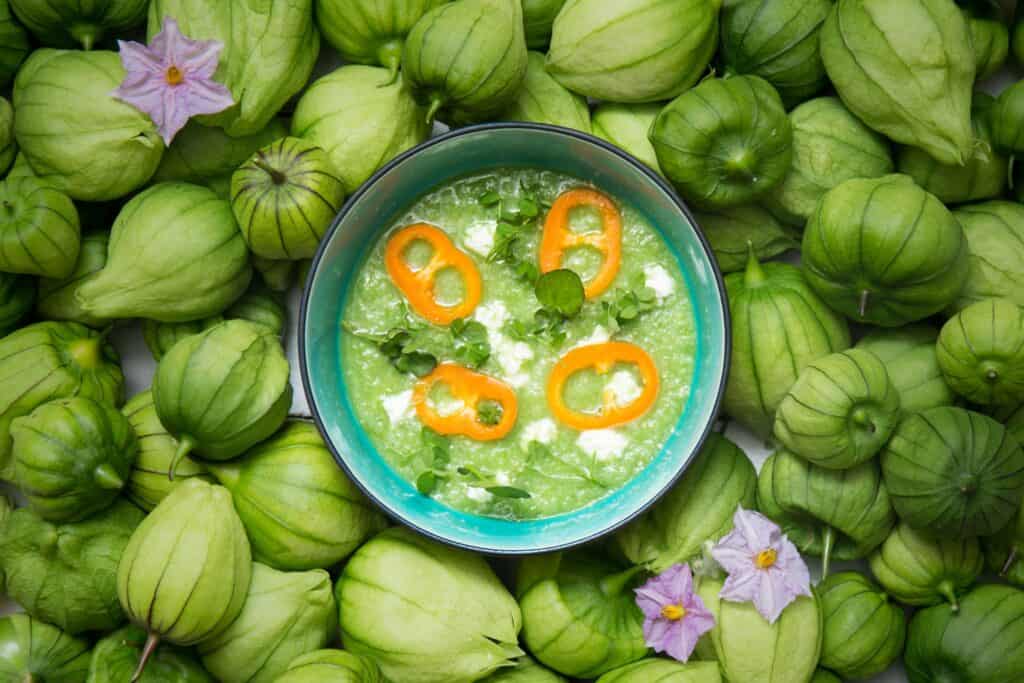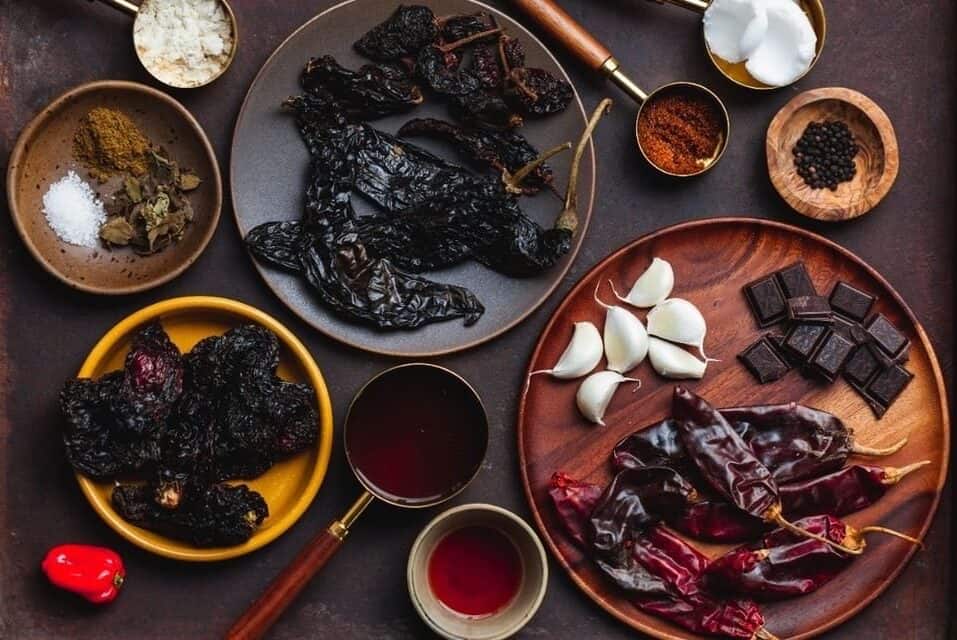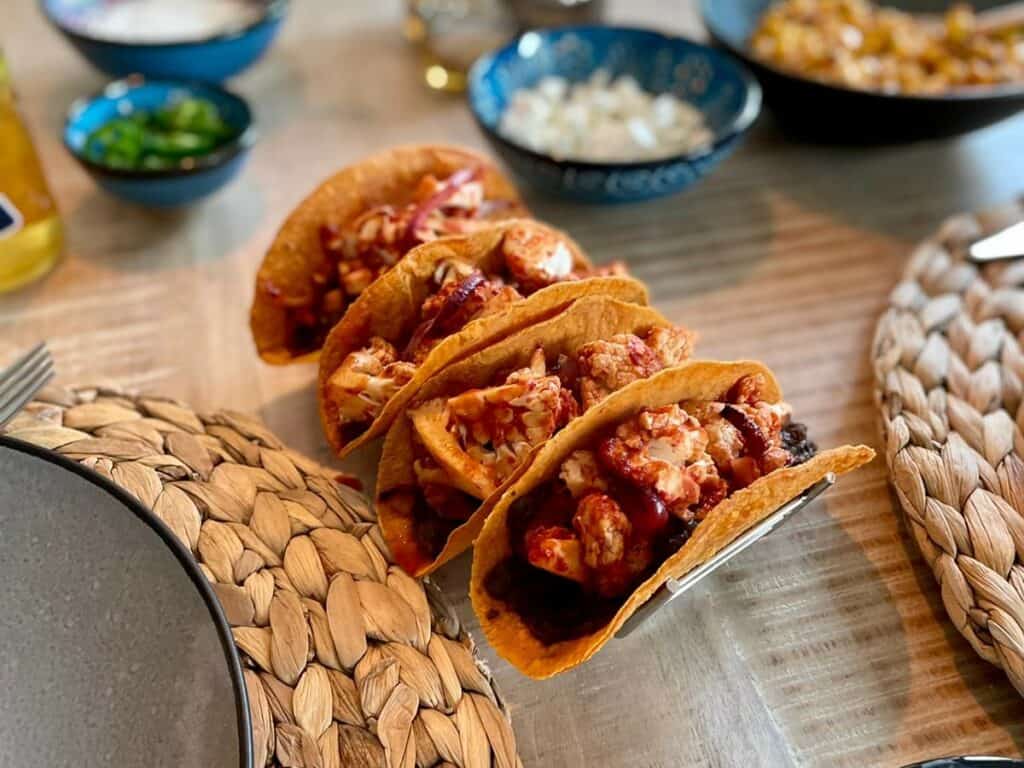- Direct from the grower
- Freshly shipped
- Fast delivery & collection point
- Spicy support

Mexico is a country known for its vibrant culture and rich history, and one of its most iconic aspects is its cuisine. Mexican food is famous worldwide for its bold and spicy flavors, and is considered by many to be among the best in the world.
Mexican cuisine makes extensive use of fresh ingredients, such as avocados, tomatoes/tomatillos, coriander and limes,, which add a bright and flavorful dimension to many dishes. The basic ingredient is corn, which appears in various forms in almost every dish. Additionally, Mexican cuisine often incorporates indigenous ingredients and cooking techniques, reflecting the country’s diverse cultural heritage.
The Mexican cuisine is a delicious and colorful representation of the country’s culture, history, and traditions. Whether you’re enjoying a simple taco or a complex mole sauce, Mexican food is sure to satisfy your taste buds and leave you wanting more.
The Mexican cuisine is often confused with the Tex-Mex cuisine, which is well-known here in the Netherlands. Yet there is definitely a difference between these two cuisines.
Tex-Mex cuisine is a fusion of Mexican and American cuisine that originated in Texas, while Mexican cuisine refers to the traditional cuisine of Mexico. While the two cuisines share some similarities, there are several key differences between them.
One of the main differences is the use of ingredients. Tex-Mex cuisine often uses ingredients that are not typically found in traditional Mexican cuisine, such as cheddar cheese, ground beef, and wheat flour tortillas. In contrast, Mexican cuisine typically uses ingredients such as fresh vegetables, Tomatillos, beans, corn tortillas, and various types of cheese.
Another difference is the level of spice. Tex-Mex cuisine tends to be spicier than traditional Mexican cuisine, with the use of chili powder, cumin, and other spices. Mexican cuisine, on the other hand, often uses fresh or dried chili peppers and a mix of spices to add flavor.
In terms of dishes, Tex-Mex cuisine includes dishes like chili con carne, fajitas, and nachos, which are not typically found in Mexican cuisine. Mexican cuisine, on the other hand, features dishes like tamales, mole, and chiles rellenos, which are less commonly found in Tex-Mex cuisine.
While the Tex-Mex cuisine shares some similarities with Mexican cuisine, it has its own unique flavors and dishes that differentiate it from traditional Mexican cuisine.




Chili peppers are a fundamental ingredient in Mexican cuisine, and are used in a wide variety of dishes to add heat and flavor. There are many different types of chili peppers used in Mexican cuisine, each with its own unique taste and level of spiciness. Fresh and dried chili peppers have different flavors and uses in Mexican cuisine.
Fresh chili peppers, such as jalapeños and serranos, have a bright and vibrant flavor with a crisp texture. They are commonly used in salsas, guacamole, and other raw or lightly cooked dishes. Fresh chili peppers can also be grilled or roasted to add smoky flavor to dishes.
Dried chili peppers, on the other hand, have a deeper and more complex flavor profile than fresh chili peppers. They are commonly used to make sauces, such as mole, enchilada sauce, and adobo, which require a deeper and more concentrated flavor. Dried chili peppers can also be ground into a powder and used as a seasoning for meat, poultry, and vegetables. Some of the most commonly used dried chili peppers in Mexican cuisine include ancho, guajillo, pasilla, and chipotle.
Dried peppers often have different names than their fresh counterparts because the drying process changes their flavor and texture, and they are often used in different ways in cooking. So the fresh Jalapeño becomes the smoky, dried Chipotle pepper. And the Poblano is the fresh variant of the Ancho & Mulato. And while the Poblano is often roasted and stuffed with cheese or meat to make chiles rellenos, the dried version is used again to make sauces like mole.
A taco is the most classic and famous dish in Mexican cuisine. It are small folded tortillas filled with various ingredients. And by tortilla, Mexicans do not mean the wheat tortillas you can buy in the supermarket. A real Mexican tortilla is made of corn, not to be confused with corn flour. Corn tortillas are made from nixtamalised corn. This is a process in which raw corn kernels are soaked and boiled in slaked lime and water, then ground with volcanic stones to make a fresh dough.
Tacos come in all shapes and sizes and are prepared differently from region to region. The holy trinity of the taco is: corn tortilla, filling and salsa. Well-known tacos are Al Pastor, Barbacao, Birria, Carnitas & Chicken Mole, but really the possibilities are endless. Experiment with different fillings and salsas!


The word Mole comes from ‘mulli’ in Nahuatl (Indigenous language in Mexico), meaning sauce. This is the common name for Mexican sauces, but outside Mexico people almost always mean Mole Poblano. This is a complex sauce that can consist of up to 40 different ingredients, including onion, chili peppers and a lot of different spices. The most surprising ingredients are cinnamon and chocolate. Mole is often considered the national dish of Mexico.
One of the most iconic Mexican drinks is tequila, made from the blue agave plant and usually served pure or in cocktails such as the margarita and paloma. Another popular alcoholic drink is mezcal, which is also made from the agave plant, but has a smokier flavour and is usually drunk pure.
Non-alcoholic drinks are also an important part of Mexican cuisine. Horchata is a refreshing drink based on rice milk, cinnamon and sugar. It is commonly consumed in Mexico, but is actually Spanish. Aguas frescas, or fresh water, is another popular non-alcoholic drink based on fresh fruit and water, often sweetened with sugar.


Xocolatl
What we know here as chocolate milk is originally from Mexico, where it is called Xocolatl (Aztec chocolate). Xocolatl is a spicy, bitter chocolate drink. It is flavoured with chili, vanilla and cinnamon. This refreshing drink can be drunk hot or cold.
The history of xocolatl goes way back. In the heart of tropical rainforests, the ancient civilisations of the Mayans and Aztecs discovered the cacao tree, from which magical beans were harvested. These beans were carefully fermented, roasted and ground into a paste, which forms the basis of xocolatl. The Mayans believed that the cacao tree itself had divine origins and that its fruit gave immense wisdom to those who consumed it. With the arrival of European explorers in the 15th century, xocolatl encountered new insights. They added sugar and milk, turning the bitter drink into the chocomel we know here in the Netherlands.
| Monday | 8:00 - 12:15 | 13:15 - 17:00 |
|---|---|---|
| Tuesday | 8:00 - 12:15 | 13:15 - 17:00 |
| Wednesday | 8:00 - 12:15 | 13:15 - 17:00 |
| Thursday | 8:00 - 12:15 | 13:15 - 17:00 |
| Friday | 8:00 - 12:15 | 13:15 - 17:00 |
| Saturday | 8:00 - 12:00 | |
| Sunday | Closed |
© Westlandpeppers | Webshop by Buro Staal